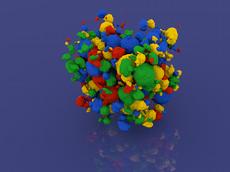Mobile phone batteries that last longer, car batteries that enable you to drive further, storage that accumulates a lot of energy from wind and solar generators. Many applications require better batteries. The research essentially focuses on three aspects here: to increase the energy density – in other words, store more energy in a smaller battery, improve the discharging and charging speed by changing and controlling the material, shape and size of the electrochemically active particles and the structure of the battery electrodes in a targeted fashion, and work on the durability of the battery in general, by trying to understand the degradation mechanisms that shorten the life of batteries.
Martin Ebner, a doctoral student from the group headed by Vanessa Wood, a professor at the Department of Information Technology and Electrical Engineering, has been examining the issue of the discharging and charging speed. In order to understand what influences it, he has been researching the microstructure of the electrodes of commercially available and home-made lithium ion batteries. Knowing this also enables us to understand the charging and discharging mechanism better and endeavour to produce optimised electrodes with more efficient batteries in mind.
ETH Zurich: Tortuous paths hamper ion transport

Comments